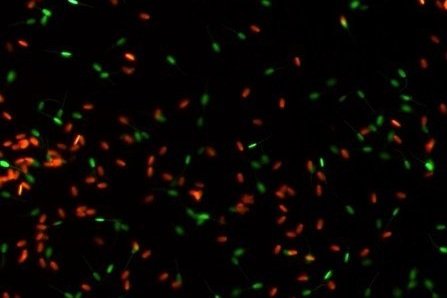
Infertility Investigations
Infertility in bitches
The most common reason for a failed pregnancy in the bitch is poor timing of breeding, which is why breeding management is so important.
The second most common reason is sperm problems. It is not uncommon though to have other issues reducing the fertility of bitches, these can include, but are not limited to, cystic uterine disease, uterine infections and pyogenic membranes, anatomical anomalies of the reproductive tract and genetic abnormalities (abnormal karyotype). Investigation involves ultrasound of the uterus and ovaries (a skill few clinicians are able to do with a non-pregnant uterus), hysteroscopy, biopsy, cytology, culture. There is no need to do open surgery via laparotomy to look at the uterus, as only the outside of the uterus is seen, whereas ultrasound looks at the whole uterus, outside, wall and lumen. Much uterine disease will be missed if only open surgery via laparotomy is performed.
Early pregnancy detection and pregnancy management is important as well to try and work out what is going wrong with empty bitches and queens.
Infertility in male dogs and tomcats
Clinical examination and history are important to try and ascertain structural and functional problems related to infertility, before more invasive investigations.
Disease of the prostate is a common cause of infertility in male dog. Successful treatment of prostate disease will result in an improvement in sperm quality.
Tomcats have no accessory sex glands, unlike the dog.
Sperm production in males is an involved and complex process, which takes approximately 76 days from start to finish. This means that problems seen may be the result of an insult many weeks ago, and also if we are looking for improvement it may take many weeks to see improvement. Semen analysis is performed after collection. We look at the total number of sperm in the ejaculate, the percentage of progressively motile sperm and the percentage of morphologically (structurally) normal sperm. The process is best done using a Computer Assisted Semen Analysis (CASA) system, as they are accurate and they keep images for later review. For maximal fertility in dogs we want to see a minimum of 70% progressively motile spermatozoa, 60% morphologically normal spermatozoa, with no more than 15% of any one noncompensable defect or no more than 25% of a compensable defect. Ultrasound, hormone analysis and testicular biopsy can all be used to ascertain underlying causes of poor semen to look at treatments which may help improve the quality of the spermatozoa.




